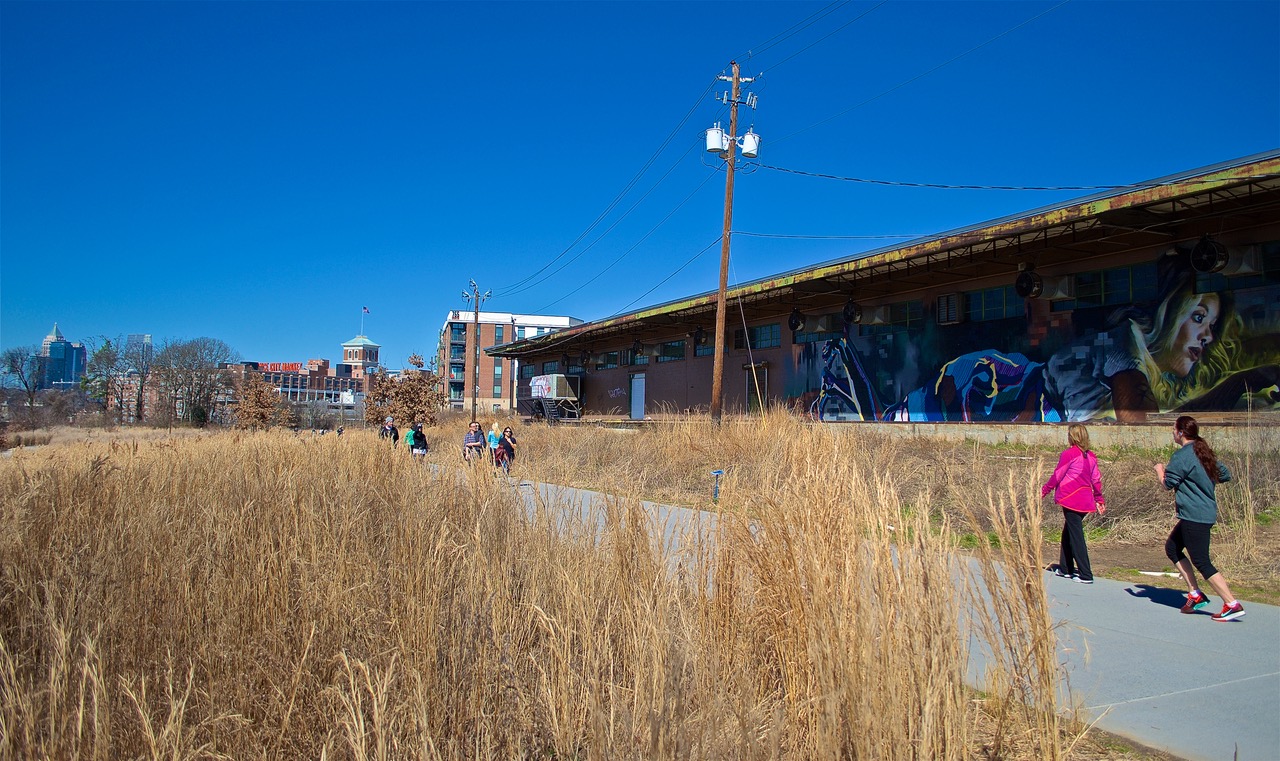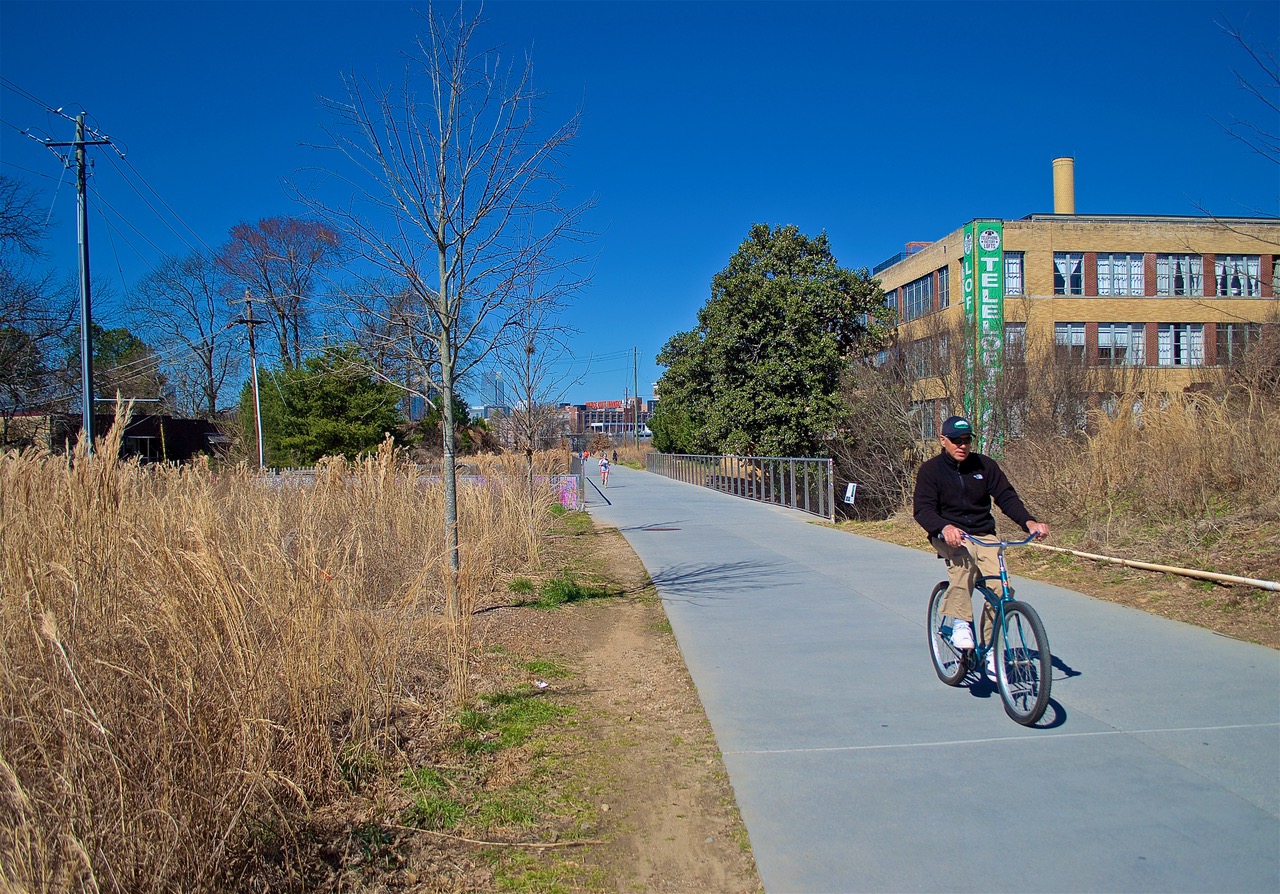A BELTLINE CHAMPION WALKS AWAY

The Atlanta BeltLine Eastside Trail. Photo courtesy of John Becker.
When the urban planner Ryan Gravel resigned from the Atlanta BeltLine Partnership board on September 26, the organization lost one of its most vocal and influential proponents, and in a way, its own creator. The BeltLine, a 22-mile network of parks and trails that weaves through 45 Atlanta neighborhoods, grew out of Gravel’s 1999 Georgia Tech master’s thesis. His consistent message regarding his departure has been that he had to distance himself from the Atlanta BeltLine Partnership (ABP) board because the organization wasn’t doing enough to provide affordable housing and maintain an atmosphere of diversity and inclusion for residents living near the trail.
Gravel’s calls to action are a broad redirection away from property acquisition and development that guided the trail’s early days. He now wants to ensure that the existing trail meets the socioeconomic needs of the Atlantans who advocated to make it a reality. And he’s willing to sacrifice some of the first approach in favor of the latter. “We believe that who the Atlanta BeltLine is built for is just as important as whether it is built at all,” wrote Gravel in his resignation letter.
Atlanta BeltLine Partnership Executive Director Rob Brawner says progress is dependent on pursuing both development and social equity. “I think it’s unfortunate that Ryan has framed this as an either/or: Either we continue to build out the BeltLine, or we choose to invest in housing and other equitable development components. You need all of the pieces to come together coherently—the transit, the housing, the trails, the parks, the art—to make the Atlanta BeltLine what it is. We need both/and solutions, not either/or solutions. We need to accelerate the investments made in affordable housing, not throttle back the investments being made in other parts of the BeltLine.”

The Atlanta BeltLine Eastside Trail. Photo courtesy of John Becker.
But Gravel says he, too, favors an “additive, not either/or” approach for the steadily expanding trail system. Gravel was displeased with the way the board handled the departure of the group’s former executive director Chuck Meadows—the decision was made only by the executive committee, not the full board, as Gravel told the Saporta Report. Gravel said that move “indicated to me that the partnership was not going to become more aggressive on these issues” of affordability and inclusion.
Publicly, at least, Gravel and the remaining board seem to agree on the direction that investments in the BeltLine need to take, but not on the speed to get there.
The 5,600 units of affordable housing promised by Atlanta Beltline, Inc. (or ABI, the for-profit development partner of the ABP) aren’t nearly enough, Gravel says, and “it’s an order-of-magnitude kind of difference.”
Since 2005, the ABI, the Atlanta Housing Authority, and other private and governmental agencies have built 2,000 affordable housing units in the immediate vicinity of the BeltLine.

The Atlanta BeltLine Eastside Trail. Photo courtesy of John Becker.
But Gravel wants to see a more comprehensive view of how the BeltLine can address social inequality. “Instead of just trying to wrestle down these units, we need to be more aggressive and think about more than just direct subsidies,” he says, “and think about other ways we can support affordability, like reducing the cost of living through transit implementation,” and also workforce development.
Brawner points to a litany of health, housing, and job force development initiatives begun by the ABP as evidence that what Gravel wants is already happening. Examples include free homeowner workshops aimed at helping neighborhood residents remain in their homes, working with Kaiser Permanente on programming to aid public health, and the Atlanta BeltLine Workforce Partnership, a program recognized by President Obama. And Brawner says Nathaniel Smith, the founder of a nonprofit that focuses on social equity who resigned from the BeltLine board along with Gravel, was appointed to the board specifically for his public sphere expertise in equality. Rhetorically, if not tactically, Gravel and Brawner both see the BeltLine as an open-ended framework for the progressive urbanism features everyone says they want: parks, affordable housing served by transit, public art, farmers’ markets, and opportunities for physical activity.

Fourth Ward Park, near the Atlanta BeltLine. Photo courtesy of John Becker.
Gravel’s resignation comes while real estate prices are cresting back to their pre-recession highs in many urban centers, including Atlanta. It’s especially true in places where high-profile park and transit infrastructure projects are luring affluent newcomers to formerly struggling neighborhoods, displacing long-time residents. “The recession took the urgency of affordability away for a while,” Gravel says. “And now that it’s being built, and you can see the amazing benefits and also the challenges of that kind of change, it seems like we’ve kind of forgotten where it came from. The land might seem expensive now, but it’s going to be a lot more expensive in 20 years.” In the past year, real estate prices in Atlanta neighborhoods near the BeltLine have increased by 23 percent for condos and 11 percent for single-family homes, the average price for which is $711,000, according to the Atlanta Business Chronicle.
Most of all, Gravel believes that the ABP has wandered away from its grounding as a grassroots community movement. “We believe that the primary accountability for the Atlanta BeltLine is not to private funders, civic partners, or to organizational leadership, but to the people of Atlanta who have given the most to make the project possible,” he wrote in his resignation letter. “If they had not believed in a vision for our future, and if they had not worked so hard and insisted on its implementation, we certainly would not be building it today.”
“When we built this grassroots movement in the early days,” Gravel says, “these weren’t commitments to abstract populations of people. These are my friends and neighbors. These are people I love.”
One thing Gravel and Brawner agree on: The Atlanta BeltLine is an unprecedented testing ground for thorny questions of gentrification, equity, and public–private partnerships, and no city has conclusively figured out how to harness these forces to meet the needs of their most vulnerable citizens.
“We can always do more,” Brawner says. “I haven’t seen a situation where a city has done enough as it relates to these issues. Because at the end of the day you’re fighting the market, and that’s very difficult.”
*Note: The original post has been edited to clarify that Ryan Gravel has resigned from the board of the Atlanta Beltline Partnership, the fundraising body, not the board of Atlanta Beltline Inc., the project’s administrator.
Zach Mortice is a Chicago-based architecture and landscape architecture journalist. Listen to his Chicago architecture and design podcast A Lot You Got to Holler, and follow him on Twitter and Instagram.
By Zach Mortice
Read more at Landscape Architecture Magazine
https://landscapearchitecturemagazine.org/2016/10/10/when-to-walk-away/

